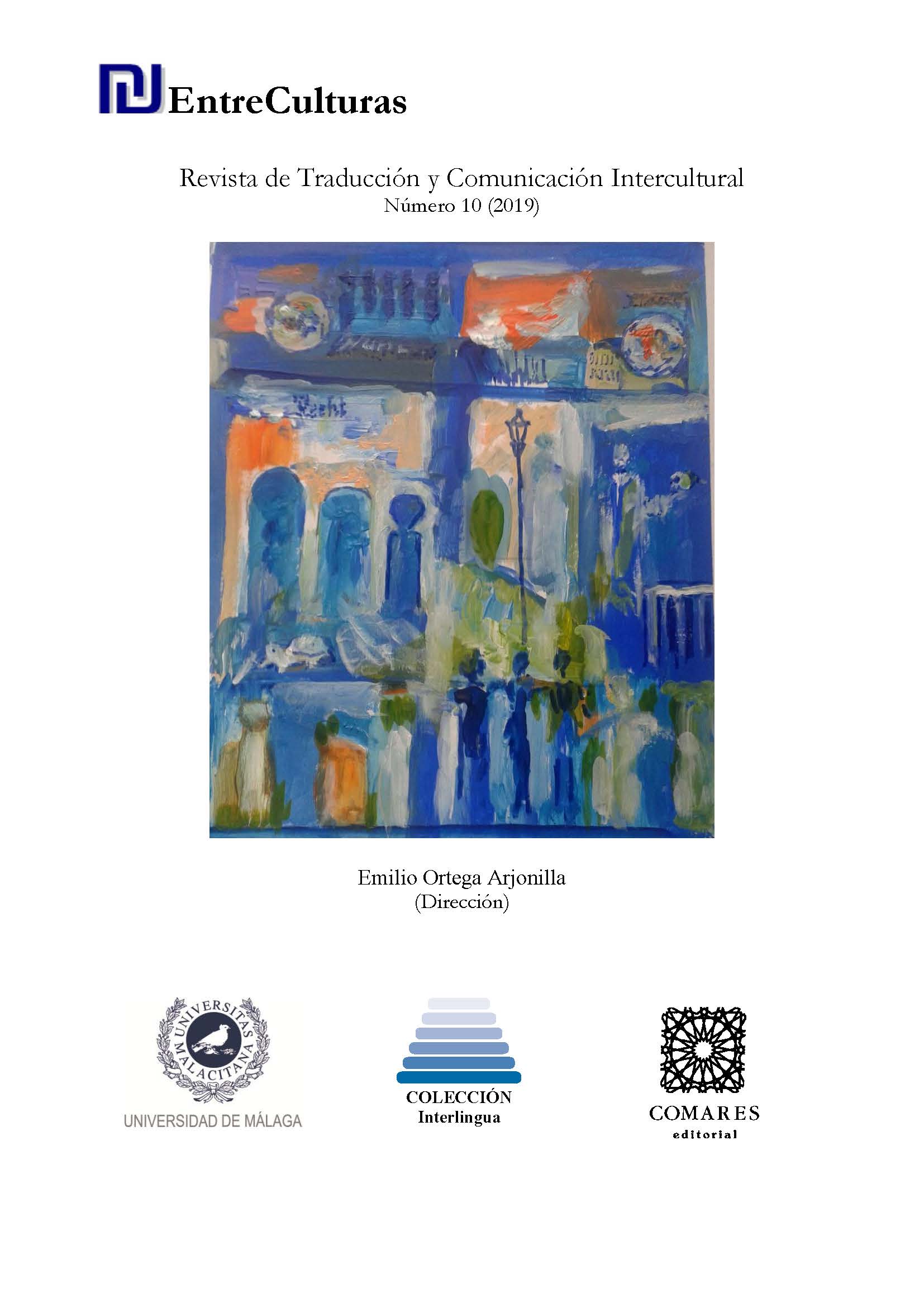Comparative Study of the figure of the Sworn Translators and Interpreters in Spain and Algeria: formal, legal and practical aspects
DOI:
https://doi.org/10.24310/Entreculturasertci.vi10.12536Keywords:
Sworn Translator and Interpreter, Algeria, SpainAbstract
In this paper, we focus on the figure of the Sworn Translators and Interpreters, both in Spain and in Algeria. By using a comparative methodology, we identify the principle parameters that define these professionals and their daily activity, from a practical perspective: i.e. the naming process, the entrance to the profession, the policies and norms that regulate the activity, and its practical aspects (translation/interpretation prices, accounting of the operations, office establishment, etc.). The results underline important differences among both figures that may be of interest to identify good practices and ways of improving the situation of these professionals in both countries.
Downloads
Metrics
References
REFERENCIAS TRADUCTOLÓGICAS
APETI (1992): Normas transitorias para el ejercicio profesional de los intérpretes jurados. Madrid, Asociación Profesional Española de Traductores e Intérpretes.
Benaouda. A. [en línea] (2011): Traduction officielle agrée. http://traductionofficielledz.blogspot.com.es/2011/04/gestion-de-loffice-public-de-traduction.html. [consulta: 10 de enero de 2017].
Borja Albi, A. (2016): Estrategias, materiales y recursos para la traducción jurídica Inglés/Español: Guía del profesor. Madrid, Edelsa.
Carmona Sandoval, A. (2012): El balance de situación en el proceso de internacionalización empresarial: aplicación de un modelo traductológico integrador para su análisis textual y propuesta de traducción (español-francés). Tesis doctoral, Universidad de Granada.
Cobos López, I. [en línea] (2009): “La traducciñn jurídica alemán-español: tipos de errores traductológicos”. Redit, 2. www.redit.uma.es/doc/ mono_cobos_redit2.pdf. [consulta: 15 de febrero de 2017].
Galanes Santos, I. (2010): “La acreditación de traductores y/o intérpretes jurados en España: novedades, contras e incoherencias”. Sendebar, 21, 251-270.
Mayoral Asensio, R. (1999): “Traducción Oficial (Jurada) y Función” en Feria García M. (ed.): Traducir para la justicia. Granada, Comares, 59-86.
Ministère de la justice (2012): Fiche technique des Traducteurs officiels. Argel, Ministère de la justice.
Peñarroja Fa, J. (2000): “Historia de los intérpretes jurados” en Sabio Pinilla J. A., Ruiz J., De Manuel Jeréz J. (eds.): Conferencias del curso académico 1999/2000: Volumen conmemorativo del XX aniversario de los estudios de traducción e interpretación de la universidad de granada. Granada, Comares, 161-195.
Vigier Moreno, F. (2010): El nombramiento de Traductores/as-Intérpretes Jurados/as de inglés mediante acreditación académica: Descripción de la formación específica y del grado de satisfacción de los egresados. Tesis doctoral, Universidad de Granada.
DICCIONARIOS
Amrani Mekki, S. (2004): Dictionnaire de la justice. París, Presses Universitaires de France.
LEGISLACIÓN ESPAÑOLA
Real Decreto 2555/1977, de 27 de agosto, por el que se aprueba el Reglamento de la Oficina de Interpretación de Lenguas del Ministerio de Asuntos Exteriores [BOE – 08/10/1977].
Código penal y legislación complementaria. Madrid: Boletín Oficial del Estado.
Orden de 8 de febrero de 1996, por la que se dictan normas sobre los exámenes para nombramiento de Intérpretes Jurados [BOE – 23/02/1996].
Real Decreto 2002/2009, de 23 de diciembre, por el que se modifica el Reglamento de la Oficina de Interpretación de Lenguas del Ministerio de Asuntos Exteriores, aprobado por Real Decreto 2555/1977, de 27 de agosto [BOE – 24/12/2009].
Orden AEC/2125/2014, de 6 de noviembre, por la que se dictan normas sobre los exámenes para la obtención del título de Traductor/a-Intérprete Jurado/a. [BOE – 11/11/2014].
LEGISLACION ARGELINA
Loi nº 64-123 du 15 avril 1964 relative au sceau d´Etat.
Ordonnance N° 95 – 13 du 10 Choual 1415, correspondant au 11 mars 1995, portant organisation de la profession de traducteur- interprète officiel.
Décret exécutif nº 95-436 du 25 Rajab 1416 correspondant au 18 décembre 1995 fixant les conditions d´accès, d´exercice et de discipline de la profession de traducteur-interprète officiel ainsi que les règles d´organisation et de fonctionnement des organes de la profession.
Décret exécutif nº 96-292 du 18 Rabie 1417 correspondant au 2 septembre 1996 organisant la comptabilité des traducteurs-interprètes officiels et fixant les conditions de rémunération de leurs services.Arrêté du 20 avril 2009 portant organisation et ouverture du sixième concours national pour l´accès à la Profession de traducteur-interprète officiel.
Downloads
Published
How to Cite
Issue
Section
License
All contents published in Entre culturas. Revista de traducción y comunicación intercultural are protected under the Creative Commons Attribution-NonCommercial-ShareAlike 4.0 International (CC BY-NC-SA 4.0) license. All about this license is available in the following link: <http://creativecommons.org/licenses/by-nc-sa/4.0>
Users can copy, use, redistribute, share and exhibit publicly as long as:
- The original source and authorship of the material are cited (Journal, Publisher and URL of the work).
- It is not used for comercial purposes.
- The existence of the license and its especifications are mentioned.
There are two sets of authors’ rights: moral and property rights. Moral rights are perpetual prerogatives, unrenounceable, not-transferable, unalienable, imprescriptible and inembargable. According to authors’ rights legislation, Entreculturas. Revista de traducción y comunicación intercultural recognizes and respects authors moral rights, as well as the ownership of property rights, which will be transferred to University of Malaga in open access. The property rights are referred to the benefits that are gained by the use or the dissemination of works. Entreculturas. Revista de traducción y comunicación intercultural is published in an open access form and it is exclusively licenced by any means for doing or authorising distribution, dissemination, reproduction, , adaptation, translation or arrangement of works.
Authors are responsable for obtaining the necessary permission to use copyrighted images.





7.png)
